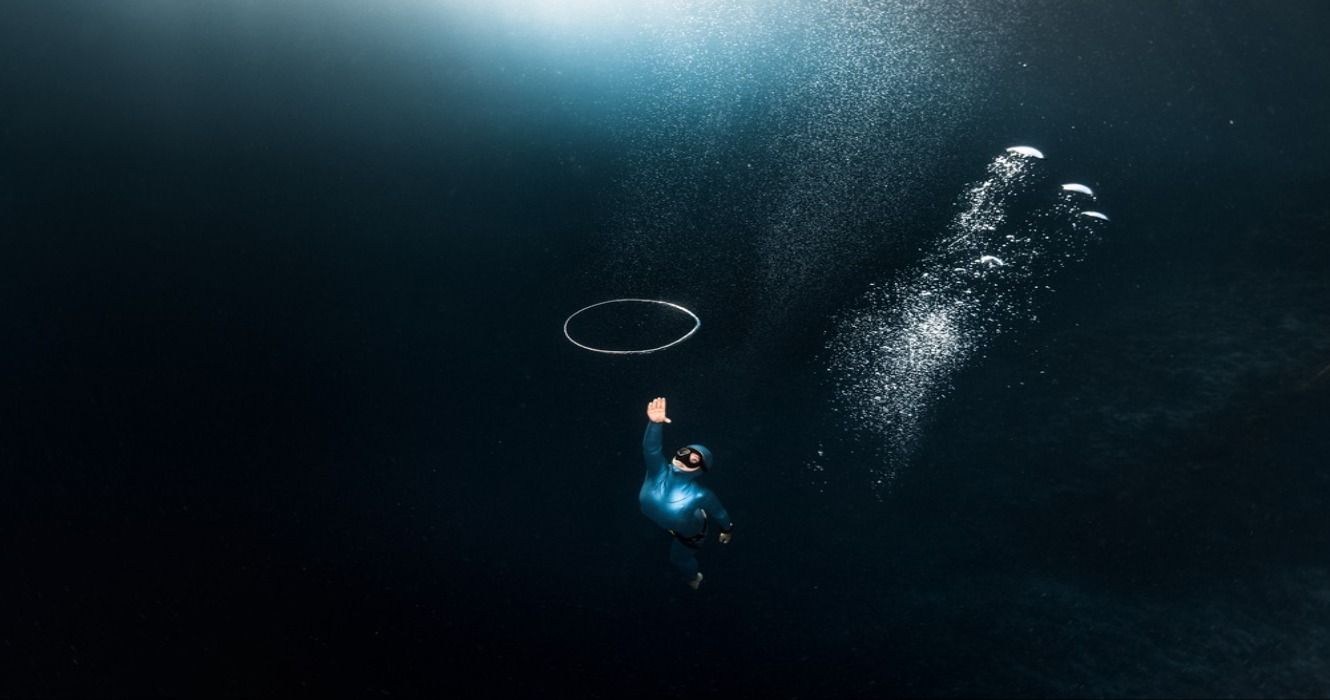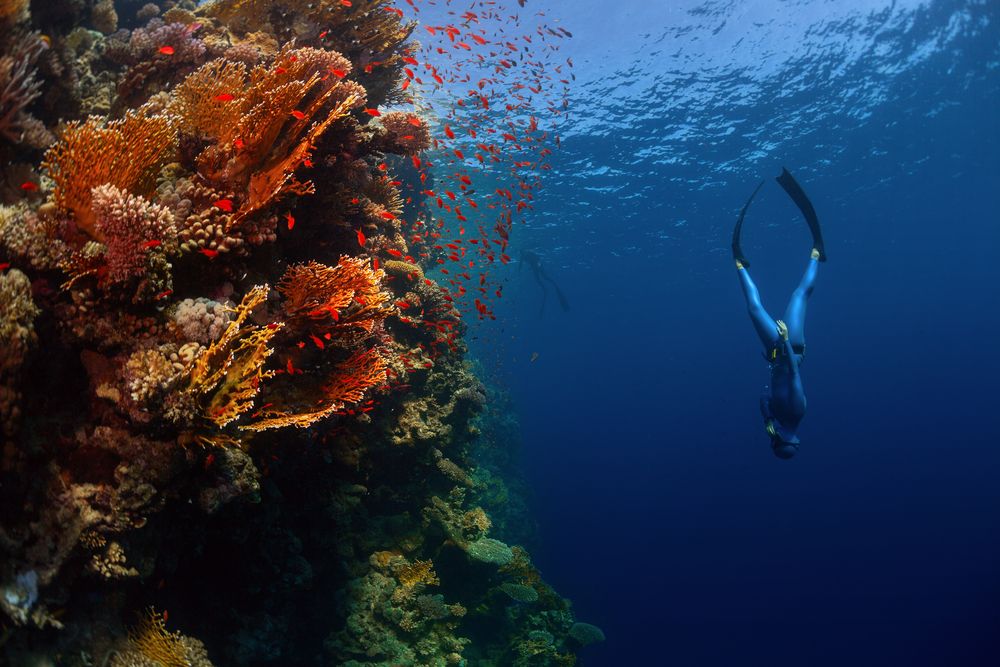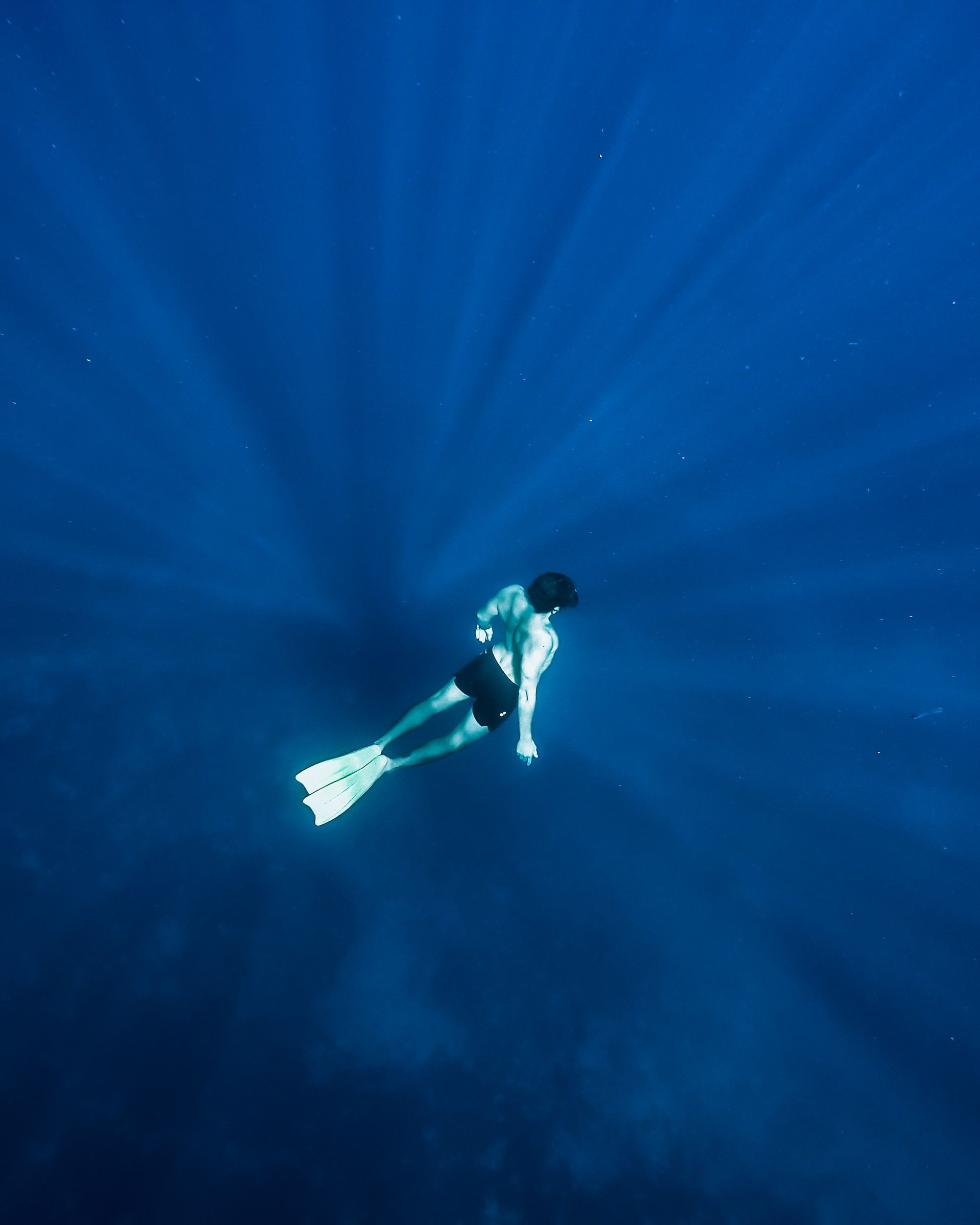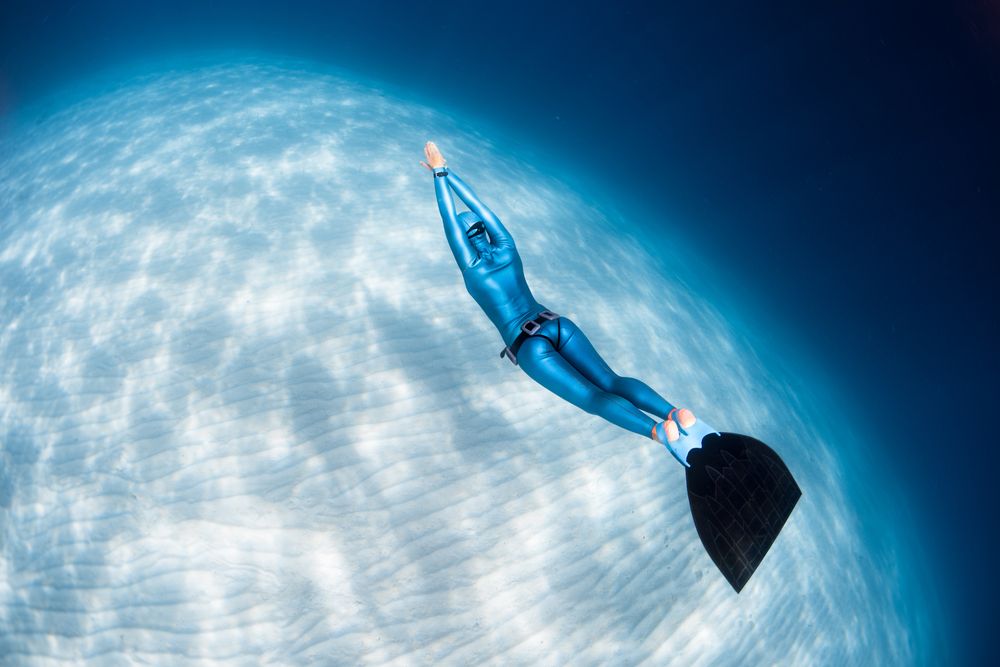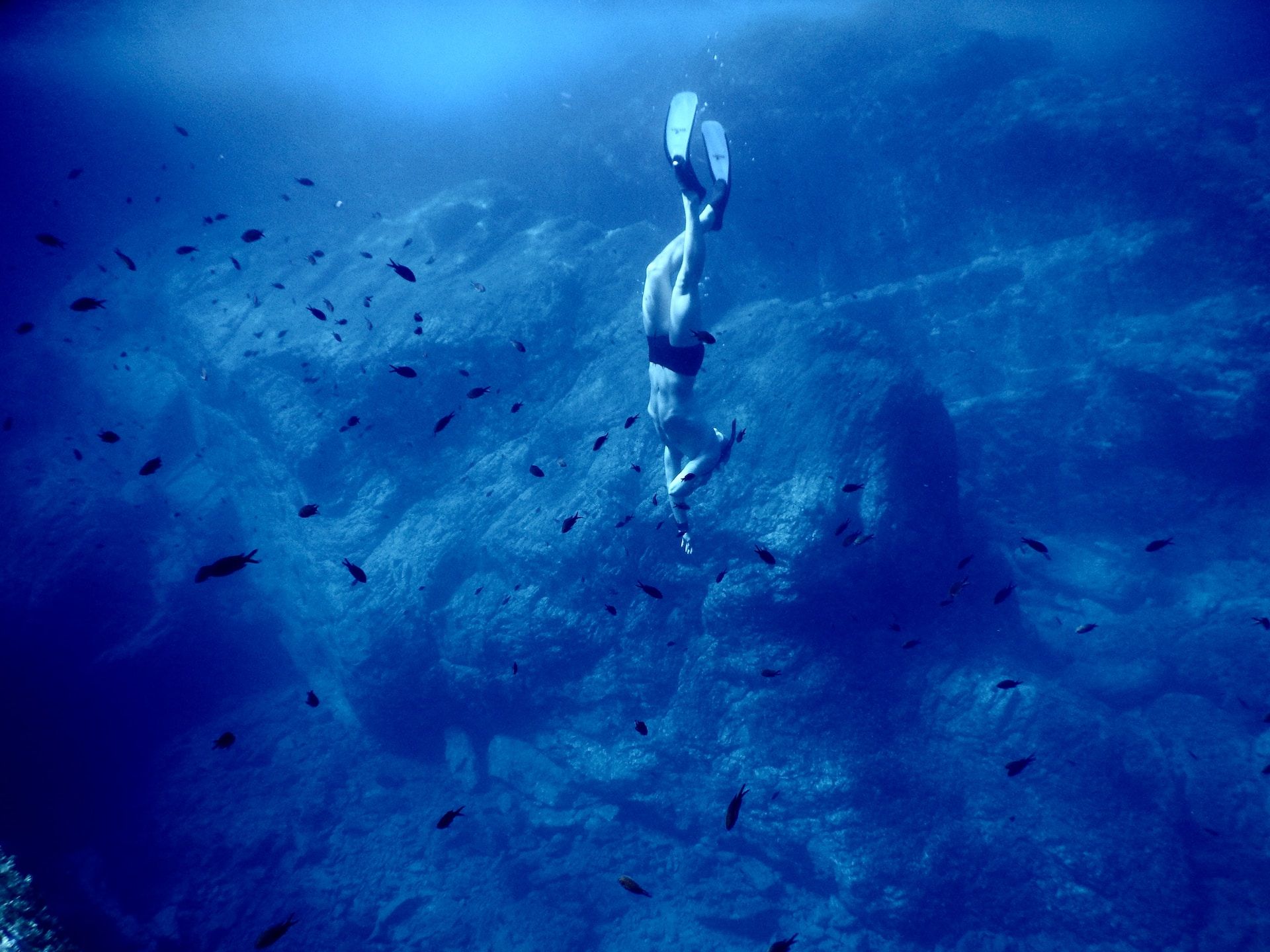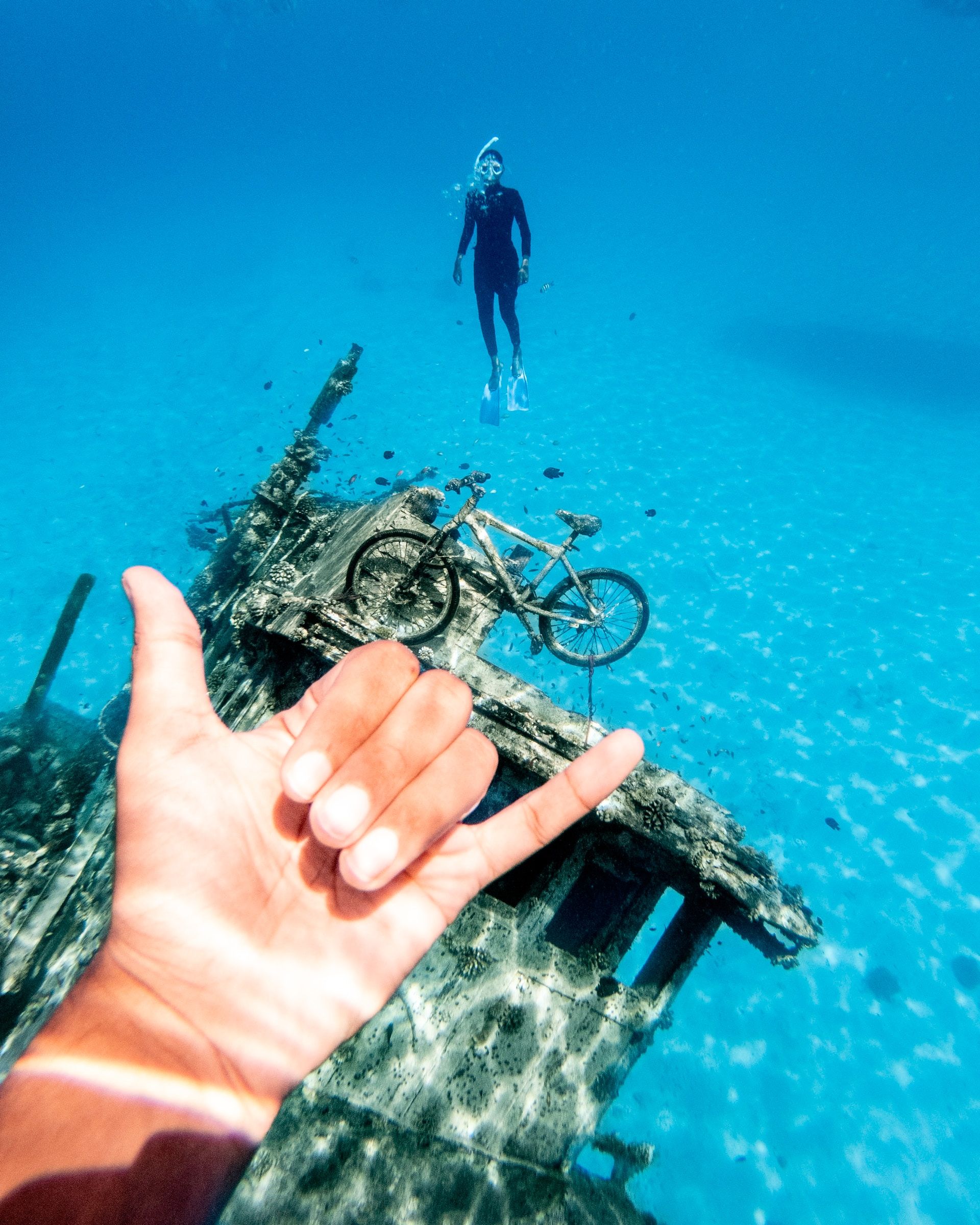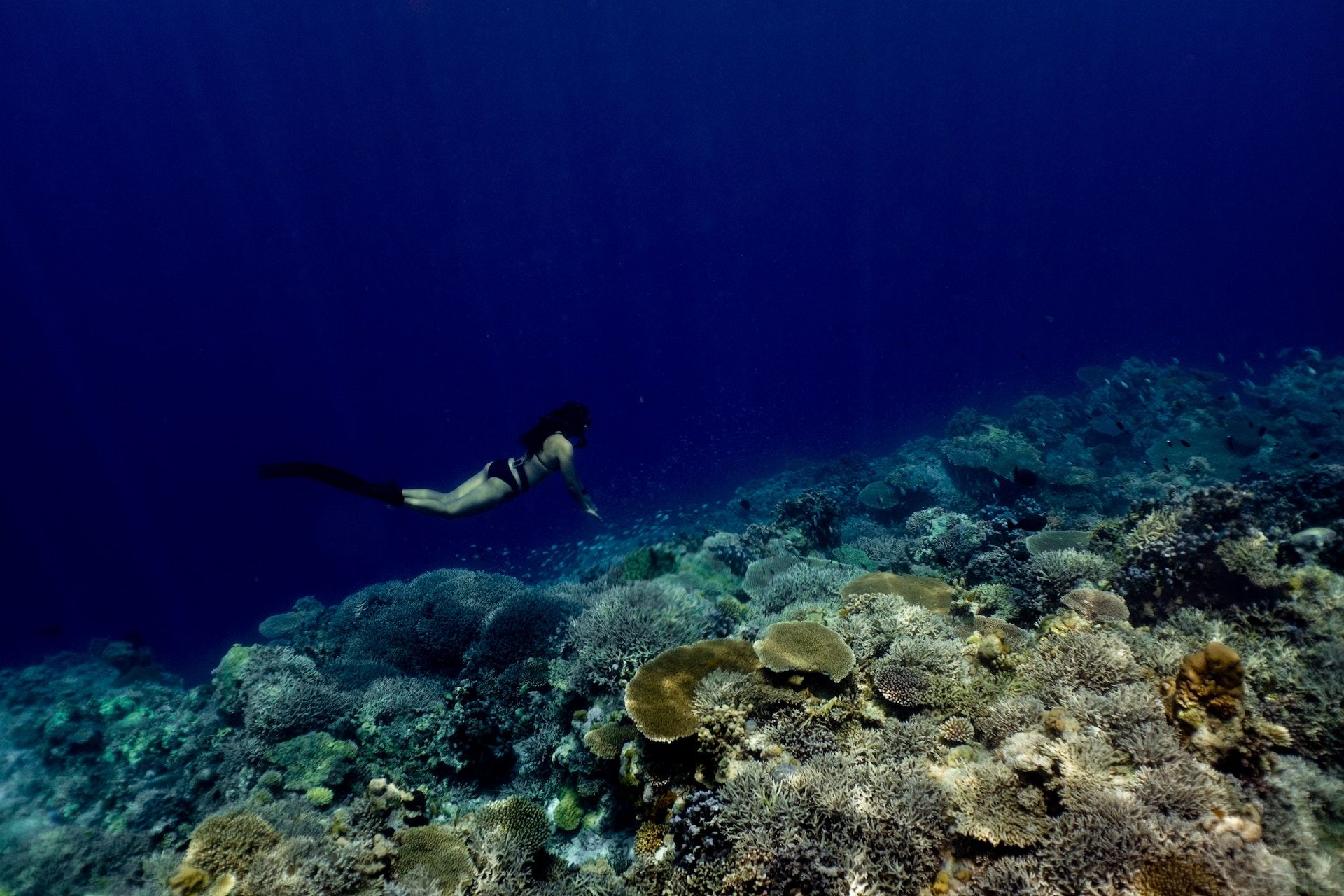Summary
- Freediving, the oldest underwater sport in history, has its roots in ancient civilizations and was originally used for practical purposes like extracting seafood and fishing for treasure.
- There are various types of freediving, including competitive sports like spearfishing and synchronized swimming, as well as different disciplines of underwater breath-holding.
- Freediving can be a dangerous sport, with about 20 freedivers losing their lives each year in the US alone, so it's crucial to prioritize safety and follow proper training and guidelines.
Scuba diving is one of the most popular vacation activities, and there are tons of epic places to scuba dive around the world, whether one seeks relaxing reefs or amazing dive sites with sharks. But there's another type of diving growing in popularity - one without the need for a tank.
Freediving (a.k.a. breath-hold diving) is not the average sport. While scuba diving is relatively commonplace, with millions participating annually, freediving (sometimes spelled "free diving") also attracts many people the world over, whether for recreational purposes or to compete in competitions and tournaments.
With participants plunging to depths on a single breath without a tank on their back, freediving is indeed one of the most extreme sports in the world. Yet, it's perhaps one of the most tranquil activities; freedivers not only learn to hold their breaths for prolonged periods, but they also learn to slow their heart rates and achieve an almost hypnotic state of relaxation, which enables them to test their limits and enjoy the sport in a way that scuba diving and snorkeling cannot offer.
Without further ado, here are some incredible facts about freediving, the oldest underwater sport in world history.
10 Freediving Dates Back To Ancient Times
Freediving is the oldest underwater sport in history. Of course, in the beginning, it wasn't necessarily a sport (being a practice/activity in the broader sense). From ancient Japan to Greece to the Americas and beyond, evidence of ancient freedivers can be found throughout the world.
Some of the main reasons for ancient freediving included extracting seafood, pearls, corals, and sponges and fishing for treasure following shipwrecks.
- First recorded evidence of freediving: The ancient Chinchorros civilization from c. 5,000 B.C. that existed in modern day south Peru and northern Chile.
9 There Are Many Types Of Freediving
One of the many interesting things to know about freediving is that it is not a singular sport/activity. Instead, there are many types of competitive freediving. These can be broken up into two broad categories: freediving sports/activities and competitive apnea. Many people also freedive for recreational purposes every year.
In terms of freediving sports, these include competitive spearfishing, synchronized swimming, underwater football, and underwater hockey. Beyond that, competitive apnea covers a range of underwater breath-holding disciplines. These disciplines include free immersion apnea, constant weight apnea, dynamic apnea without fins, dynamic apnea with fins, and static apnea.
- Most popular freediving competitive apnea discipline: Constant weight apnea
8 Sea Nomads In Southeast Asia Have Evolved To Freedive Better Than Others
The Bajau People, located in Southeast Asia, often called sea nomads, have lived in small houseboats off the coasts of Malaysia, Indonesia (known for its many beautiful seaside destinations), and the Philippines for about a millennium now.
What's more, the Bajau People diverged from non-diving Saluan approximately 15,000 years ago. This means that rather than being a case of purely cultural trends, the Bajau People may have literally evolved (with biological adaptation) to be better freedivers. Among the evidence backing this up is a study showing that the Bajau have large spleens.
- Bajau people are located in: The coastal regions of Malaysia, Indonesia, and the Philippines
7 Safety Is Key: Freediving Is The Second-Deadliest Sport On Earth
One of the essential things to know about freediving is this: It goes without saying that safety is essential. After all, freediving is second only to BASE jumping for ranking among the most dangerous sports in the world.
In fact, about 20 freedivers lose their lives each year in the US from approximately 10,000 active divers. This means that about 1 in 500 or 0.2% of freedivers are lost each year. Such a figure is clearly not for the faint of heart.
Ultimately, one should only freedive if one is totally comfortable in doing so and are prepared to follow the safety rules and recommendations to the Nth degree (e.g., using the buddy system, never freediving alone, and following safety and freediving training standards).
- Number of US freedivers who die each year: 20
6 Freedivers See Their Heart Rate Plummet
Notably, freedivers have a significantly reduced heart rate while swimming to and through the depths of water. Freedivers generally see their heart rate drop below 40 beats per minute (bpm). However, it can drop to a rate as low as about 10 bpm (one source even claims 7 bpm).
What's incredible about the latter figure is that 10 bpm is lower than the heart rate of a person in a coma, which is generally below 50 bpm.
- Lowest recorded BPM of a freediver: Around 7-10 bpm
5 Freediving Is A Silent Activity
One aspect of freediving that makes it especially appealing is how quiet it is. Without any breathing apparatus, freedivers can enjoy silence beneath the water (scuba diving with a tank on one's back is actually quite noisy, as bubbles escape from the regulator when a diver exhales).
This peace and quiet can make for an especially intimate experience when a freediver has the opportunity to explore sea life up close and personal (a lack of noise and bubbles from scuba breathing gear also means marine life is less likely to be scared off).
The silence offered by freediving is one of the many reasons why freediving can be a wonderful experience for those with the proper training, offering an idyllic and tranquil escape from the noise and chaos of day-to-day life.
- Reported potential mental health benefits of freediving: Reduced anxiety, higher mental resilience for dealing with stress, better mental clarity, and much more.
4 There Are Some Incredible Freediving World Records
Remember the competitive apnea disciplines from earlier? Well, in general, these disciplines have associated freediving world records, including those covering time spent underwater and the depths reached.
Here are some notable examples (according to the International Association for the Development of Apnea or AIDA):
|
Discipline |
Men |
Women |
|
Static Apnea |
11 minutes and 35 seconds |
9 minutes and 5 seconds |
|
Free Immersion |
128 meters |
98 meters |
|
Dynamic With Fins |
301 meters |
277 meters |
|
Dynamic Without Fins |
250 meters |
213 meters |
|
Dynamic With Bifins |
290 meters |
243 meters |
- Longest static apnea record: 11 minutes and 35 seconds by French freediver Misfud Stéphane which was set in the summer of 2009.
3 A Buddy System Is Used To Protect Freedivers
It's important to avoid freediving alone. After all, an individual freediving by themselves cannot be rescued should something go wrong (e.g., blacking out, which might occur if a freediver goes beyond their limits - or even if they do stay within them, it can sometimes happen).
Freediving in twos or more is part and parcel of training, but this approach should be continued even after people have completed essential training. It is more than just good practice; using the buddy system can save lives, while the opposite is true upon failing to use this system each and every time.
- The buddy system as procedures: This system is a set of procedures to improve safety for freedivers
2 Most People Can Learn To Freedive With Proper Training
Thankfully, freediving, in a broad sense, is not an elite sport. While there are certainly forms of freediving and depths to reach that only those with a ton of experience and skill should consider, basic freediving is suited to pretty much anyone who can complete the necessary training successfully. Much like there are many levels of scuba diving training, the same applies to freediving, too.
Arguably, the main challenge involved in becoming a recreational freediver is developing the ability to hold one's breath properly and safely (as well as learning to relax - this part is essential). In general, it should take just a few freediving lessons for most people to develop their capacity to safely hold their breath for as much as two to five minutes.
This will make it possible to freedive for a few minutes, with the exact suitable timeframe depending on an individual's experience, skill, comfort zone, and their natural ability to relax and hold their breath.
Of course, similar pastimes like snorkeling can offer access to vibrant underwater worlds, and beyond that, there is the option of scuba diving (and there are many great places for beginners to learn to scuba dive). However, freediving has many of its own advantages, such as arguably allowing for a more intimate experience of the world beneath the water free from the weight and noise of scuba diving equipment.
- Length of time to train for recreational freediving: May take 2-3 days or more (depending on experience levels and skills)
Generally, the main and most respected freediving training association is AIDA, but other dive agencies, such as PADI, SSI, and CMAS (which are traditionally scuba diving agencies), also offer their own freediver courses.
1 Freedivers Can Experience Negative Buoyancy With Enough Depth
Freedivers experience positive buoyancy (an upward pressure/force) when they first dive beneath the water. However, eventually, if descending to around 30 ft below the surface, neutral buoyancy can be reached, and then even negative buoyancy (a downward pressure/force) with a further descent. This all comes down to water pressure; shallow waters have lower atmospheric pressure, while deeper waters have higher pressures.
While negative buoyancy may not be dangerous in of itself, failure to take this into account can disrupt one's freediving plans. If a freediver is oblivious to the depths at which neutral and then negative buoyancy may begin and the effects negative buoyancy have, they may get caught off guard.. A mix of confusion and panic can easily create a dangerous situation. Therefore, as the old saying goes, 'knowledge is power'.
So, freedivers should certainly consider neutral and negative buoyancy zones ahead of a dive that they may encounter. They should also ensure that any dive weights they carry are optimized (like scuba divers, freedivers also use weight - typically on a weight belt - to help them descend and control their buoyancy). This can help toward maximizing safety and creating more peace of mind ahead of a dive.
- Depth at which neutral buoyancy may occur: Approximately 30 ft below the surface

